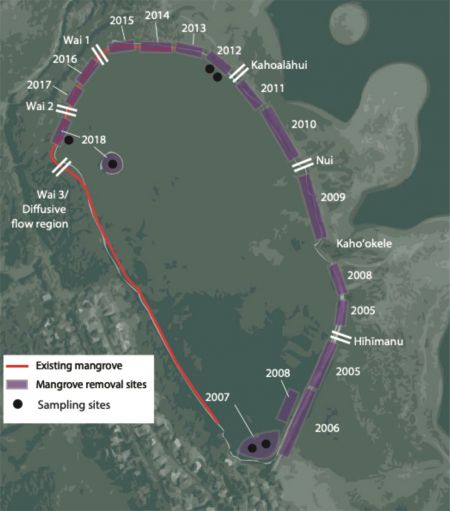Microbial biogeochemical cycling across a chronosequence of mangrove introductions across Hawai‘i
The red mangrove (Rhizophora mangle) was introduced to Moloka‘i in 1902 and has spread quickly across the main Hawaiian islands. Mangroves are critical to the health of environment where they originate from. However in Hawai‘i, mangrove forests are both destructive to our native marshes and in no way resemble their natural environment; instead, mangroves along Hawaiian coasts provide a stronghold for other invasive species. Moreover, Hawaiian species cannot eat mangrove leaf litter so this material builds up and has to be broken down by microbes. Here, our goal is to understand how effective communities of microbes living in mangrove sediment are at breaking down accumulated material. We predict that older Hawaiian mangrove forests on Moloka‘i have become more efficient at breaking down mangrove leaf litter, as compared to newer mangrove forests. We also predict that mangrove removal (such as in He‘eia Fishpond on O‘ahu) will promote water quality improvements, which in turn will shift the microbe communities toward its original state. This project will provide insight into the sensitivity or resilience of Hawaiian coastal ecosystems to mangrove invasions. The success of local Hawaiian fisheries depend on the informed management of invasive mangrove forests. Understanding how mangroves change critical microbial communities over time is critical as Hawai‘i faces a future of cohabitation with the red mangrove.

PROJECT DETAILS
FUNDED:
FY2020
PI:
Rosie Alegado
Associate Professor
Dept. of Oceanography
UH Mānoa
Co-PI:
Becca Lensing
Dept. of Oceanography
UH Mānoa

